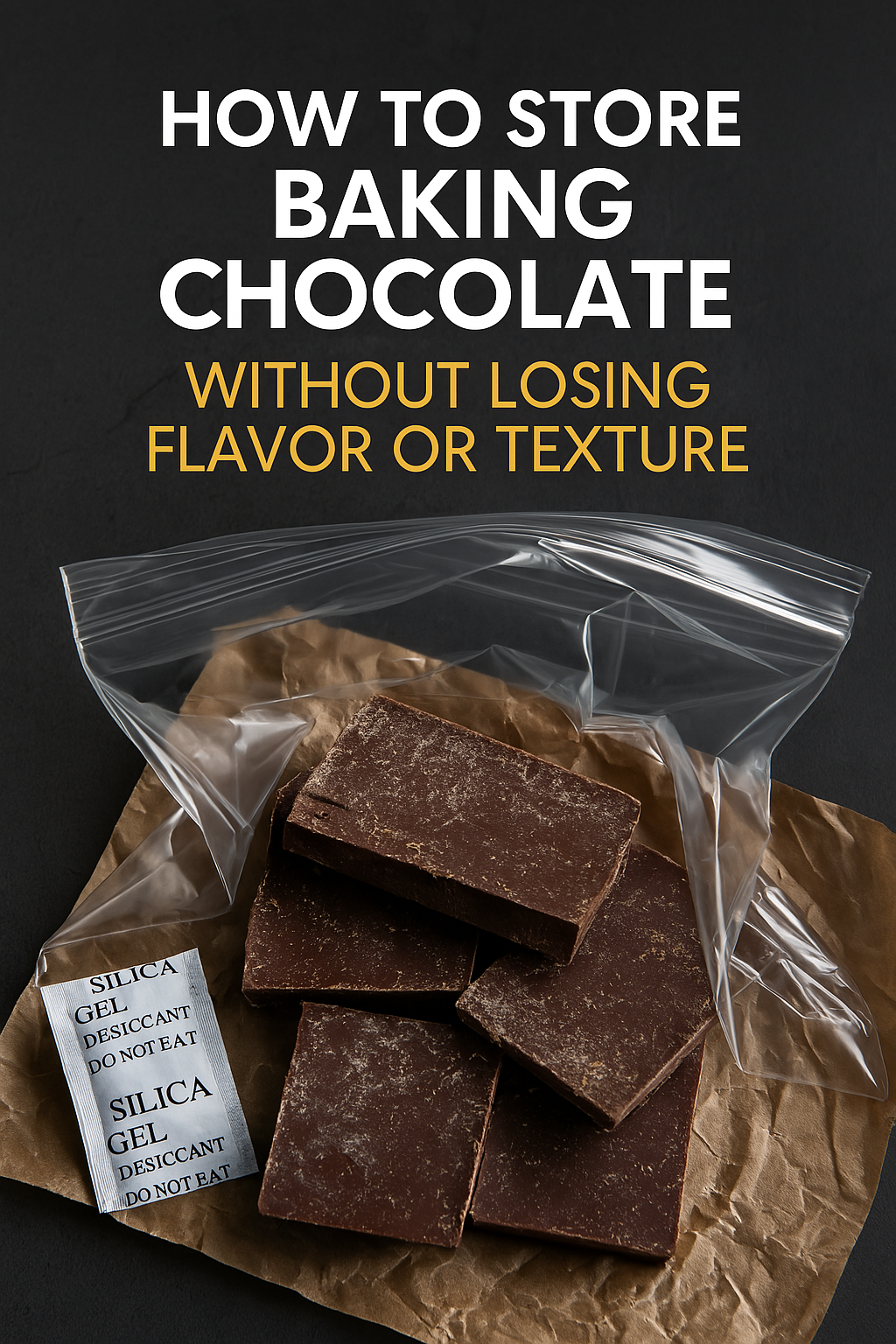Ever opened a bar of baking chocolate, only to find it looking dull, dusty, or streaky white? Yeah, that dusty, powdery layer is called “chocolate bloom” and it’s every baker’s frustration. Especially when you thought you were stocked with top-notch baking essentials for your next batch of brownies.
The truth is, storing baking chocolate properly isn’t just a nice-to-know detail. It’s essential if you want to preserve its texture, flavor, and melt quality.
Let’s break down the best ways to keep your cooking chocolate in its best form—whether you bake occasionally or keep a stash year-round.
Why Storage Matters for Baking Chocolate
Chocolate may seem tough, but it’s surprisingly sensitive. Heat, humidity, and even strong kitchen smells can affect both the flavor and structure of your chocolate.
When not stored correctly, chocolate can:
- Develop fat bloom (a whitish film on the surface)
- Absorb unwanted odors (goodbye rich cocoa, hello garlic!)
- Lose its silky texture
- Change how it melts, which is critical in baking
That’s a lot of risk for something that’s supposed to be a baking essential, right?
Whether you’re using baking chocolate to make ganache, cookies, or cake layers, keeping its integrity intact is key to delicious results.
The Ideal Environment for Storing Baking Chocolate
Chocolate’s happy place? Somewhere cool, dry, dark, and consistent.
Temperature: Aim for a space between 15–21°C (60–70°F). Not too warm (to avoid melting), but not cold enough to cause condensation when removed.
Humidity: Keep it under 50%. Moisture causes sugar bloom, which messes with texture.
Light: Keep it out of direct sunlight or bright kitchen lights. Light can degrade cocoa solids and alter flavor.
Smell: Chocolate absorbs odors easily. If you keep it next to your spice rack, it might end up tasting like cumin. Not ideal for cake.
Best spots? A dedicated pantry shelf, kitchen drawer, or a cupboard that doesn’t fluctuate much in temperature. Avoid above the oven or next to the dishwasher.
Can You Refrigerate or Freeze Baking Chocolate?
You can, but it’s not the best move unless you have no other choice.
Why refrigeration is tricky: Chocolate easily absorbs moisture and odors in the fridge. Even if it looks fine, it may come out tasting…off. Plus, condensation when taking it out can lead to bloom.
Freezing is a last resort: If you live in a hot climate and don’t have air conditioning or a cool pantry, freezing is better than letting it melt. But you have to do it right.
How to freeze baking chocolate properly:
- Wrap it tightly in plastic wrap.
- Place in an airtight, odor-free container.
- When ready to use, move it to the fridge for a few hours.
- Then bring to room temperature before unwrapping. This avoids sudden condensation.
Storage Tips by Chocolate Type
Different kinds of baking chocolate need slightly different care:
Dark Chocolate (bittersweet, semi-sweet):
- Has the longest shelf life (up to 2 years)
- Less sensitive to temperature shifts due to low milk content
Milk Chocolate:
- Shorter shelf life (up to 1 year)
- More prone to fat bloom due to added dairy
White Chocolate:
- Most delicate of all
- Highly sensitive to heat and humidity
- Store in extra airtight conditions, preferably with a silica packet or moisture absorber
Keep each type in its original packaging when possible, or re-wrap tightly and label the type/date.
Final Thoughts
Proper storage of baking chocolate is essential to preserving its quality, performance, and shelf life. By controlling temperature, humidity, and exposure to odors or light, you ensure your chocolate stays smooth, flavorful, and ready to melt beautifully into any recipe. Whether you’re working with dark, milk, or white chocolate, following the right storage practices helps prevent waste, saves money, and guarantees better baking results every time.

